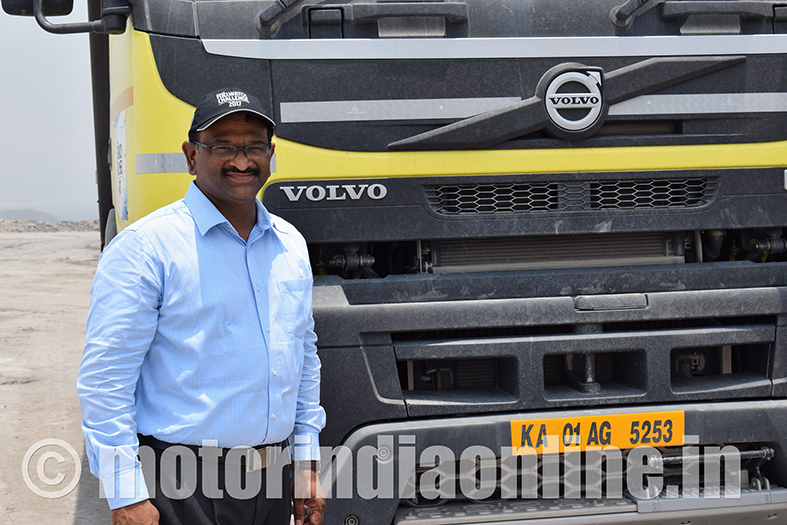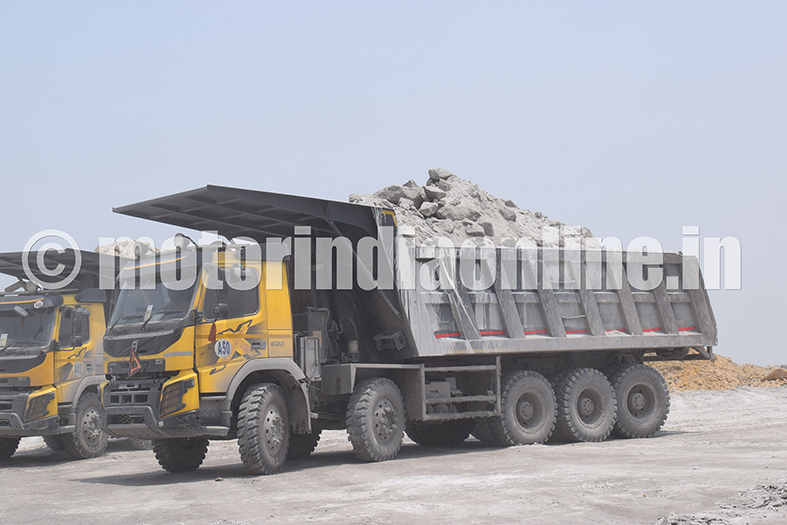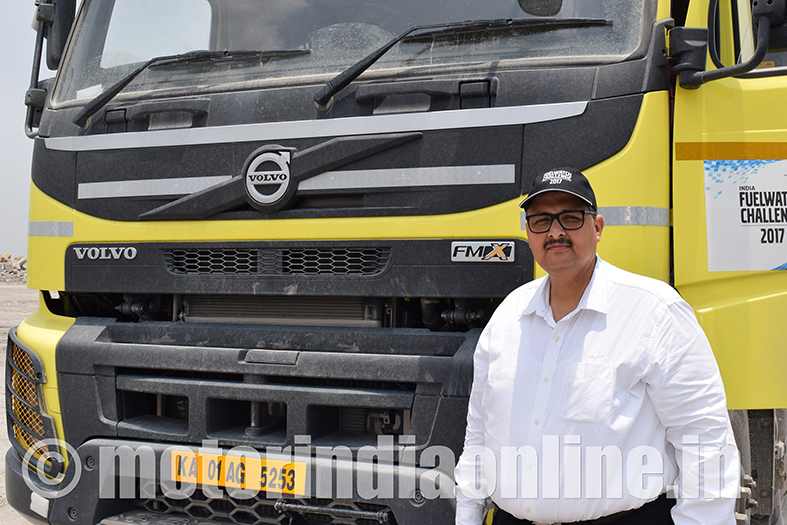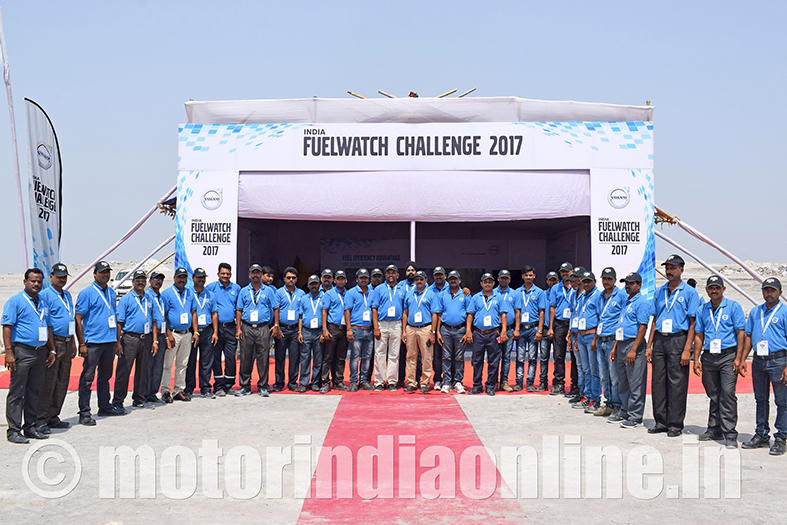It takes more than good driving to succeed
For the 8th consecutive year, Volvo Trucks, a global leader in sustainable transport solutions, conducted the India Fuelwatch Challenge Finals recently. The competition, recognised as an annual mainstay event in the industry, embodies the company’s Fuelwatch mission towards a fuel-efficient industry model. After a series of national competitions across the region, 29 top contenders met for a decisive driving in the Singrauli coal mines located in the eastern part of Madhya Pradesh and the adjoining southern part of Sonebhadra district in Uttar Pradesh.
After a series of regional competitions, Appana Babu, of BGR Mining and Infra Pvt. Ltd., Hyderabad, emerged as the winner. Mr. B. Dinakar, Senior Vice President – Sales Marketing & Aftermarket, Volvo Trucks, said on the final day of the event: “29 finalists from 29 different customers competed in the final round of the competition spanned over 3 days where finalists were judged based on their driving skills and fuel efficiency.”
Genesis of fuel saving
Since its inception in 2009, the Fuelwatch Challenge India emphasizes that fuel-efficient driving takes a lot more than being able to drive from point A to B. The driver has a big impact on the vehicle’s fuel economy, and to get the most out of the truck with the least possible fuel consumption, the driver needs to plan the journey and think ahead. “The whole route has to be strategized and he needs to know when to speed up, when to slow down and when to use the truck’s momentum and keep rolling,” added Mr. Dinakar.
Hundreds of driver participants of the Fuelwatch Challenge have become ambassadors of the Fuelwatch community, sharing the skills and technical knowledge that they have picked up at the event to catalyse Volvo’s goal of a fuel-efficient industry. “Without drivers, we cannot champion on our mission of optimum fuel saving for the industry and society,” asserted Mr. Dinakar.

With an impressive finish, Mr. Appana Babu, was awarded the 2017 Fuelwatch Championship. He will go on to represent India in the finals to be held in Sweden. Trailing behind with a marginal difference was Mr. Rajkaran Kushwaha, from Baghel Infrastructures Pvt. Ltd., Singrauli, the first runner-up and Mr. Bablu Ghatwal from Coal Mines Associated Traders Pvt. Ltd. as the second runner-up.
A triumphant Mr. Appana Babu said: “This is a dream come true for me. I have been visualising this competition in my head for over a year now, and I performed exactly as I had thought to do. Winning this is not only about driving, but also based on the understanding of the terrain, the vehicle and how to move in harmony.”
Fuelwatch Culture
The results of the Fuelwatch Challenge showcase real-world cost benefits for companies and industries, while positively impacting the environment and the society at large. Congratulating the participants, Mr. Dinakar reiterated: “The competition helps us, at Volvo Trucks, to relook at technology and improve upon it. This year we saw increased participation from over 400 drivers of 29 customers. The fuel-efficiency margins clocked by the winners have set new targets for possible savings in a real-world context, which is testimony of the fact that driver training is pivotal for ensuring increased fuel efficiency.”
He added: “With regular driver engagement through our driver training programs, we have observed that the best drivers can achieve up to 30 per cent better fuel efficiency compared to average drivers. Till date we have trained over 55,000 truck drivers nationwide and together we are spearheading the Fuelwatch mission in the industry. With our globally accredited training programs, Indian truck drivers are proving to be top contenders and are making their mark in the global Fuelwatch Challenge.”
Interview with Mr. B. Dinakar, Senior Vice President – Sales, Marketing & Aftermarket, Volvo Trucks:
What goes behind shortlisting the drivers for the final?
We start the preparation three months ahead of the final competition and all our customers. In anticipation and preparation of the competition drivers start driving cautiously, paying more attention to getting shortlisted through the regional competitions. So, in a bid to participate, drivers give better fuel efficiency by practicing on the job. Feedback from the customers is that the practice during the preparation makes fuel efficiency better by 15 per cent.
Out of the 42 customers, 20 who had more than 200 fleet of Volvo, were offered a regional round at their site. We selected one driver per customer. The remaining 22 customers were told to nominate their best drivers as they had less than 200 drivers for whom organizing fragmented rounds would be logistically an up-hill task. Each such company nominated three best drivers and then our regional driver trainer picked the best one.
Could you please take us through the finals?
The finals started on June 14 with a flag-off event. The first day, the drivers drove through the 1.7 km (one-way, 3.4 km return trip) competitive track with unloaded trucks, followed by the loaded trucks on day 2. The trucks were FMX 460 8×4, i-shift variant of the Volvo FMX, amongst the first lot of BS-IV trucks. The fuel economy was recorded by the on-board telematics system Dynafleet. At the end of the stretch where the driver was supposed to turn, he had to stop while turning and then take a reverse for a complete full turn. A lot depends on where the drivers accelerate, when they brake and how they maintain the vehicle momentum.
How is Volvo able to convince the customers that the drivers will better their daily driving habits during the Fuelwatch competition?
The results speak for themselves. We share the difference between the ‘best driver’ and a ‘very good’ driver. This year too it is 30 per cent between the winning drivers and the other drivers. We sensitise the customers regarding this difference and tell them to encourage their drivers. We not only conduct driver training but also conduct complete skill development of customer drivers on their driving skill, their road observations and know-how of repair and maintenance. All these aspects continuously make a better driver.
Scintillating Singrauli
While embarking upon my journey, the name Singrauli flashed images of a rural area having open swath of land with few homes and not many people. For a little over five hours the journey from the Varanasi airport to Singrauli, covering a major part of UP towards MP, also justified those images.
However, entering Singrauli gave a more civilized feel and the township appeared as a young man awaiting its chance to glory. A look around the district and its homely commercial structures vouches for its desire to be recognized as a city. The black smoke that comes out of the various chimneys assures you that Singrauli is emerging as India’s energy capital. All major companies operating in Singrauli belong to the Indian energy industry.
A simple conversation with the driver will give you a sense that the operations of companies include mining of coal for power generation. In the recent past, several private companies have also joined the league of companies operating in Singrauli. It is expected that soon Singrauli would feed around 35,000 mw of electrical power to the grid alone.
Volvo alone has around 850 trucks in the area. It also has 15 site support arrangements with different customers over there.
The Fuelwatch was conducted at the Dudhichua coal mine. Till March, the mine boasted of 272 Volvo trucks, which was the highest ever for the area. An elevated view of the Dudhichua coal mine will be enough to absorb the operational efficiency of the Volvo trucks.
One can see the older 440 FMX 8X4 as well as 10X4 with 480 hp launched 4-5 years ago. Even the tag axle 520 10X4 Volvo FMX trucks grace the mine with their ability to carry the overburden swiftly. My drive on the BS IV competition truck FMX 460 was also as smooth as the smoke that permeates through the chimney, and luckily the journey back to Varanasi was as scintillating as the city of Singrauli.


